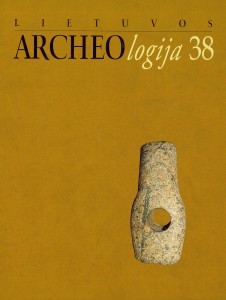Gamtos ir kultūros raidos bruožai Amalvo ir Žuvinto tarpežeryje
Features of the faunal and cultural development in the area between Lakes Amalvas and Žuvintas
Author(s): Vygandas Juodagalvis, Lauras BalakauskasSubject(s): Archaeology
Published by: Lietuvos istorijos institutas
Keywords: pollen analysis; stray finds; Stone Age; Bronze Age; Iron Age
Summary/Abstract: The research of the area between Lakes Amalvas and Žuvintas was conducted as part of the topic ‘Reconstruction of the Development of the Social Structure and Economic Activity in the Late Ice Age – Early Holocene (10th–1st millennia BC) society in the Trans-Nemunas region (Užnemunė)’ within the framework of the ‘Archaeolandscape’ scientific research project. The fertile top soils of the Dovinė basin encouraged the expansion of the farmed land and the adaptation of the area to farming. This caused the reconstruction of the hydrographic network, which occurred in the Amalvas and Žuvintas basins as early as the mid-19th century. The first news of isolated archaeological finds discovered in ameliorating Amalvas Bog reaches us from that time. The few stray finds did not receive any attention from archaeologists, the only investigated object in the microregion being Varnupiai hillfort, which was excavated by P. Kulikauskas in 1971. The complex investigation of the microregion, which included a pollen analysis of the sediments of Lake Amalvas, supported by abundant radiocarbon dates of the layers, and archaeological research, which were supported by a critical analysis of the sources, the precise location of long known and newly discovered stray finds, and the detection of new objects, created opportunities to look more deeply at the natural and cultural development in the microregion from the oldest times to historical times.
Journal: Lietuvos archeologija
- Issue Year: 2012
- Issue No: 38
- Page Range: 53-106
- Page Count: 54
- Language: Lithuanian

